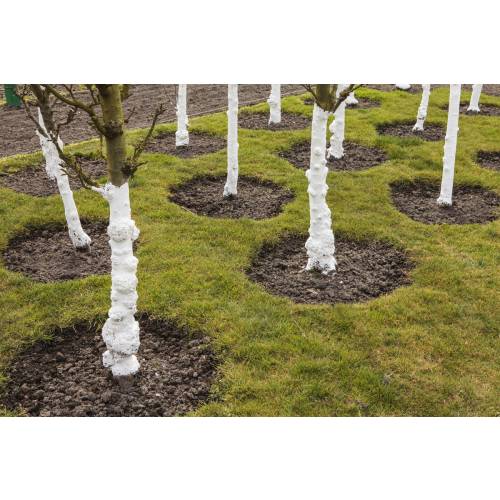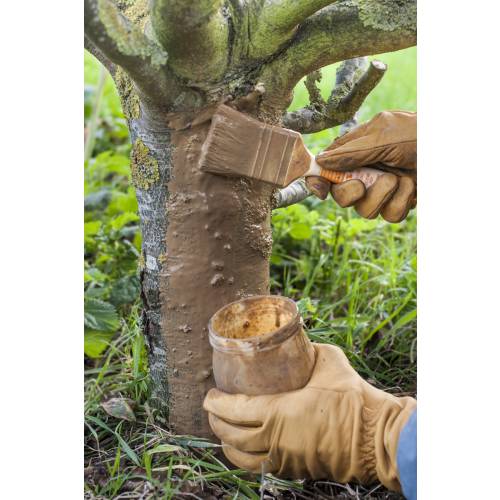
Prevention
Painting fruits trees
- Details
-
Painting the fruit trees' trunks is an old technic which fights off a lot diseases and plant bugs while respecting the environment. To use with no moderation!
An ancestral recipe
Placing an unguent on trees was already done on the sixteenth century as shown on a book dating from 1543. Formerly the tradition was to paint the tree trunks with a clayish mixture called "Saint-Fiacre's ointment". Originally, this technic was used to help the pruning wounds to heal. Nowadays, it is above all used to fight orchard's enemies, starting with fungi which cause a lot of damage to fruits and branches, as well as insects attacking fruits.
Lime or clay?
The traditional recipe calls for ‘lime milk', that is to say quicklime diluted in water. This action wasn't without danger and quicklime has become difficult to find. Furthermore, it has been found that a mix with clay did just as well. All you need to do is mix some clay with water to get a mix. Clay soil from the garden is suitable as long as it does not have any pebbles. Clay found in the shops, whether white or green is perfectly suitable. The consistence must be quite liquid but not too much, rather like a thick paint or a pancakes mix. To this mix we add different compounds to reinforce its efficiency.
Improved mix
To your clayish mixture obtained to start with, add some compounds which will increase the adhesion to the bark:
- Milk: it thickens out the mix and makes it stickier.
- Eggs' white: it helps the mixture to cling to the trunk while drying.
- wood' ashes: without any scrapings (no pieces of charcoal), it brings in potash and other disinfectant compounds which reinforce the mixture's effect.
You can also add some plants extracts which will increase the insecticidal effect, like some liquid manured young stinging nettles, liquid manure of mature horsetail, and extract of tansy or wormwood. To finish you can also add some Bordeaux mixture as the old gardeners used to do. This would increase the effect of the ointment against winter forms of fungi which cause so many diseases.
When and how to apply
Apply a coat with a brush, soaking liberally bark's crevices. Apply to the framing branches, meaning the main branches of the tree. This mixture can be applied to young trees and old alike but is more useful as from when the trees have started to produce fruits, a few years after planting. The best period to intervene is during a dry period and this even if it freezes at night. The mix has time to dry well and you can apply a second coat if the first one has crazed. - Photos (3)



